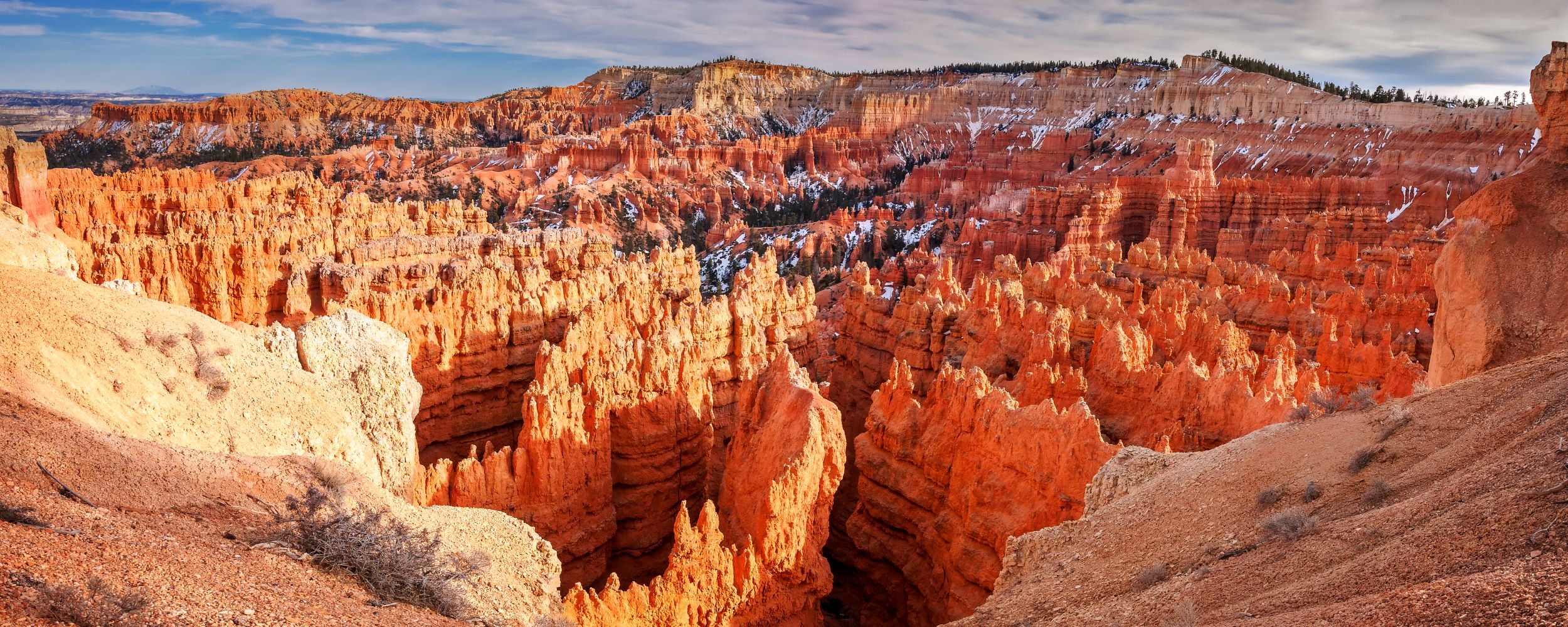
Bryce Canyon National Park
Bryce Canyon National Park, located in southern Utah, is a mesmerizing landscape renowned for its unique geological structures called hoodoos. These spire-like rock formations, created by the forces of erosion, form a spectacular array of natural amphitheaters and mazes. Established as a national park in 1928, Bryce Canyon spans approximately 35,835 acres and is not actually a canyon but a series of natural amphitheaters carved into the edge of a high plateau. The park's distinctive geological structures, combined with its high altitude and remote location, create a landscape that is both otherworldly and enchanting.
The geology of Bryce Canyon is a story of sedimentation, uplift, and erosion. The park's hoodoos are primarily formed in the Claron Formation, a series of rock layers rich in limestone deposited between 35 and 50 million years ago. These layers were uplifted by the same tectonic forces that raised the Colorado Plateau. Over time, the relentless forces of water and ice, combined with the freeze-thaw cycle, sculpted the rock into the intricate formations seen today. The vibrant colors of the hoodoos, ranging from reds and oranges to pinks and whites, are due to the presence of minerals like iron and manganese.
The climate of Bryce Canyon is one of its defining features. At an elevation that ranges from 8,000 to 9,000 feet, the park experiences a unique blend of weather conditions. The higher altitude results in cooler temperatures than the surrounding lowlands, and the park often receives significant snowfall in the winter. These snowy conditions add a stunning contrast to the red rock formations and are a popular draw for photographers and winter sports enthusiasts. Summer brings milder temperatures but also the chance of afternoon thunderstorms, which contribute to the erosion process that shapes the hoodoos.
Bryce Canyon's diverse ecosystems support a variety of plant and animal life. The park's high elevation and isolated location create a unique environment where species from the Rocky Mountains, the Great Basin, and the Colorado Plateau converge. The park's forests are dominated by Ponderosa pine, Blue Spruce, and Douglas Fir, interspersed with meadows of wildflowers during the spring and summer. Wildlife in the park includes mule deer, elk, pronghorn antelope, and a variety of bird species, including the rare California Condor which has been reintroduced to the area.
The park's most famous viewpoint, Bryce Amphitheater, offers a breathtaking panorama of hoodoos and spires. Trails like the Rim Trail and Navajo Loop descend into the amphitheater, giving visitors a closer look at the intricate formations. The experience of walking among the hoodoos is surreal and offers a perspective that is starkly different from the views at the rim.
One of the most iconic hikes in the park is the Queen's Garden Trail, which winds through stunning rock formations and leads to a hoodoo that resembles Queen Victoria. Another popular trek, the Peek-a-boo Loop, takes hikers on a more challenging journey through the heart of the park's largest amphitheater, offering up-close views of the hoodoos and the chance to experience the park's natural quiet and solitude.
The park's night sky is another significant attraction. Due to its remote location and high elevation, Bryce Canyon offers some of the darkest night skies in the United States. The park is designated as an International Dark Sky Park, making it an ideal location for stargazing and astronomy programs. The Milky Way is often visible to the naked eye, and the park's astronomy programs allow visitors to explore the wonders of the night sky.
The human history of Bryce Canyon is rich and varied. The area was home to Native American tribes for thousands of years, with the Paiute people being the most recent before the arrival of European settlers. The park is named after Ebenezer Bryce, a Mormon pioneer who settled in the area in the 1870s. His quote describing the canyon as "a hell of a place to lose a cow" is legendary.
Bryce Canyon National Park offers a unique and awe-inspiring experience. Its otherworldly landscapes, rich biodiversity, and dark night skies make it a destination that is both visually stunning and scientifically significant. Whether exploring its trails, admiring its panoramic vistas, or gazing at its star-filled skies, Bryce Canyon provides a glimpse into the natural forces that shape our world and a place of wonder and exploration for all who visit.